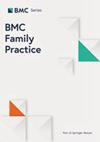了解 1 型和 2 型糖尿病患者的胰岛素使用劣势:对治疗糖尿病患者的医疗服务提供者进行的横断面调查
IF 3.2
3区 医学
Q1 MEDICINE, GENERAL & INTERNAL
引用次数: 0
摘要
本研究旨在了解医疗服务提供者(HCP)对糖尿病患者(PwD)胰岛素剂量不达标程度的看法,以及胰岛素管理的具体挑战和解决方案。我们对德国、西班牙、英国和美国治疗糖尿病患者的全科医生和专科医生(N = 640)进行了在线调查。调查收集了有关全科医生及其患者的背景、全科医生对胰岛素次优使用的看法以及与胰岛素优化使用相关的挑战的回答。结果显示了分类汇总统计数据。总体而言,对于 1 型糖尿病 (T1D) 和 2 型糖尿病 (T2D),大多数医生表示在过去 30 天内错过或错过胰岛素注射剂量的患者比例低于 30%(T1D:83.0%;T2D:74.1%)。保健医生认为,导致患者漏服或漏服胰岛素的前 3 个原因(除漏服一餐外)包括他们 "忘记了"(栓式胰岛素:75.0%;基础胰岛素:67.5%)、"太忙/分心"(栓式胰岛素:58.8%;基础胰岛素:48.3%)和 "不在正常作息时间"(栓式胰岛素:57.8%;基础胰岛素:48.6%)。保健医生报告了类似的原因,他们认为这些原因导致了残疾人胰岛素剂量的错误计时。数字技术和改善保健医生与残疾人之间的沟通是保健医生确定的优化残疾人胰岛素剂量的潜在解决方案。其他研究表明,残疾人经常出现胰岛素剂量不达标的情况。与此相反,本研究的结果表明,保健医生认为残疾人胰岛素剂量不达标的情况并不多。虽然本研究没有进行直接比较,但这种明显的差异可能会导致保健医生难以向残疾人提供最佳的胰岛素管理建议。提高胰岛素剂量测量的客观性等方法可改善胰岛素使用者和保健医生之间的沟通,有助于减少胰岛素剂量的不理想情况,从而提高治疗效果。本文章由计算机程序翻译,如有差异,请以英文原文为准。
Understanding suboptimal insulin use in type 1 and 2 diabetes: a cross-sectional survey of healthcare providers who treat people with diabetes
The purpose of this study was to understand the healthcare provider (HCP) perspective on the extent of suboptimal insulin dosing in people with diabetes (PwD), as well as specific challenges and solutions to insulin management. An online survey of general practitioners and specialists (N = 640) who treat PwD in Germany, Spain, the United Kingdom, and the United States was conducted. Responses regarding HCP background and their patients, HCP perceptions of suboptimal insulin use, and challenges associated with optimal insulin use were collected. Categorical summary statistics were presented. Overall, for type 1 diabetes (T1D) and type 2 diabetes (T2D), most physicians indicated < 30% of PwD missed or skipped a bolus insulin dose in the last 30 days (T1D: 83.0%; T2D: 74.1%). The top 3 reasons (other than skipping a meal) HCPs believed caused the PwD to miss or skip insulin doses included they “forgot,” (bolus: 75.0%; basal: 67.5%) “were too busy/distracted,” (bolus: 58.8%; basal: 48.3%), and “were out of their normal routine” (bolus: 57.8%; basal: 48.6%). HCPs reported similar reasons that they believed caused PwD to mistime insulin doses. Digital technology and improved HCP-PwD communication were potential solutions identified by HCPs to optimize insulin dosing in PwD. Other studies have shown that PwD frequently experience suboptimal insulin dosing. Conversely, results from this study showed that HCPs believe suboptimal insulin dosing among PwD is limited in frequency. While no direct comparisons were made in this study, this apparent discrepancy could lead to difficulties in HCPs giving PwD the best advice on optimal insulin management. Approaches such as improving the objectivity of dose measurements for both PwD and HCPs may improve associated communications and help reduce suboptimal insulin dosing, thus enhancing treatment outcomes.
求助全文
通过发布文献求助,成功后即可免费获取论文全文。
去求助
来源期刊

BMC Family Practice
医学-医学:内科
CiteScore
3.20
自引率
0.00%
发文量
0
审稿时长
4-8 weeks
期刊介绍:
BMC Family Practice is an open access, peer-reviewed journal that considers articles on all aspects of primary health care research. The journal has a special focus on clinical decision making and management, continuing professional education, service utilization, needs and demand, and the organization and delivery of primary care and care in the community.
 求助内容:
求助内容: 应助结果提醒方式:
应助结果提醒方式:


